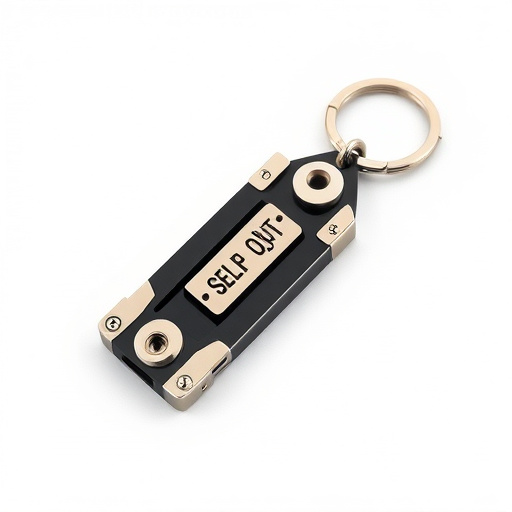Discreet keychain protection tools, regulated under product safety laws worldwide, offer enhanced security with features like encryption and GPS tracking while maintaining legal compliance through certifications like CE and ISO. To maximize their benefits, choose high-quality devices that are easy to use and update regularly, enabling remote tracking for added peace of mind.
In today’s digital age, ensuring the safety of your personal belongings is paramount. One innovative solution gaining traction are discreet keychain protection tools. This article serves as a comprehensive guide to navigating the legal requirements surrounding these devices, exploring their advanced features and functionality, and providing best practices for implementation. We’ll delve into compliance standards to look out for, ensuring you stay ahead in protecting your items with these sophisticated and virtually invisible keychain safety devices.
- Understanding Legal Frameworks for Keychain Safety Devices
- Discreet Protection Tools: Features and Functionality
- Compliance and Certification Standards to Look Out For
- Best Practices for Implementing and Using Keychain Safety Devices
Understanding Legal Frameworks for Keychain Safety Devices
In many regions, the regulation of discreet keychain protection tools falls under product safety laws, which aim to ensure consumer protection. These legal frameworks often mandate that products, including small accessories like keychains, meet specific safety standards to mitigate potential risks. Manufacturers and importers must comply with these regulations to bring such devices into the market. The focus is on preventing harm caused by defective or poorly designed products, ensuring they are safe for everyday use.
The legal requirements vary across countries, but common areas of concern include material safety, durability testing, and labeling guidelines. For instance, certain chemicals used in keychain materials might be restricted due to their potential impact on health, especially if the device is intended for prolonged contact with the user’s body. Compliance with these legal frameworks not only ensures product safety but also enhances consumer trust, assuring folks that their choice of discreet keychain protection tools is reliable and secure.
Discreet Protection Tools: Features and Functionality
Discreet keychain protection tools offer a unique and innovative way to safeguard your keys, providing peace of mind in today’s digital age. These compact devices are designed to be unnoticeable and easily attachable to your keys, making them an ideal solution for those seeking subtle yet effective security measures. The primary feature is their ability to prevent unauthorized access by rendering keys useless without the correct activation code or biometric verification.
Functionally, these tools often incorporate advanced technologies such as cryptographic encryption, secure storage of access codes, and even GPS tracking capabilities. Some models also include features like automatic lock and unlock functions upon detection of an authorized user’s presence, ensuring a seamless and secure experience. Their discreet nature allows users to keep their protection measures under wraps, making them a preferred choice for individuals who value both security and low-profile functionality.
Compliance and Certification Standards to Look Out For
When it comes to ensuring the safety of your belongings, especially in public spaces, discreet keychain protection tools are a popular and practical solution. However, with various options available, understanding the legal requirements for keychains is essential. One of the primary considerations is compliance with international standards for personal security devices.
Look out for certifications such as CE (Conformité Européenne) marking, which indicates that the product meets European health, safety, and environmental protection standards. For global recognition, ISO (International Organization for Standardization) certifications are valuable, ensuring the quality and reliability of your keychain safety device. These standards guarantee that the tools have undergone rigorous testing and meet specific performance criteria, offering users peace of mind.
Best Practices for Implementing and Using Keychain Safety Devices
When implementing and using discreet keychain protection tools, a few best practices stand out to ensure maximum safety and convenience. Firstly, opt for high-quality devices that blend seamlessly with your keychain or bag accessories. These tools should be small, lightweight, and designed to prevent unauthorized access without drawing attention. Secondly, familiarize yourself with the device’s operation; understanding how to activate and deactivate it quickly is vital in potentially risky situations.
Regularly updating security software and ensuring compatibility with your devices is another essential practice. Keep your keychain protection tool’s firmware updated to benefit from enhanced features and security patches. Additionally, enable remote tracking and alert systems for easy recovery in case of loss or theft. Remember that these tools are just as effective as their users make them; staying vigilant and proactive enhances the safety provided by discreet keychain protection devices.
When implementing a keychain safety device, understanding the legal frameworks and compliance standards is essential. As these devices offer discreet protection tools for personal security, ensuring they meet necessary regulations can prevent legal issues. By adhering to best practices and choosing certified products, individuals can enjoy enhanced safety without compromising privacy. Discreet keychain protection tools are a viable option for those seeking an extra layer of security in today’s world.
